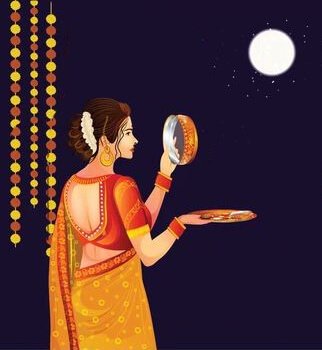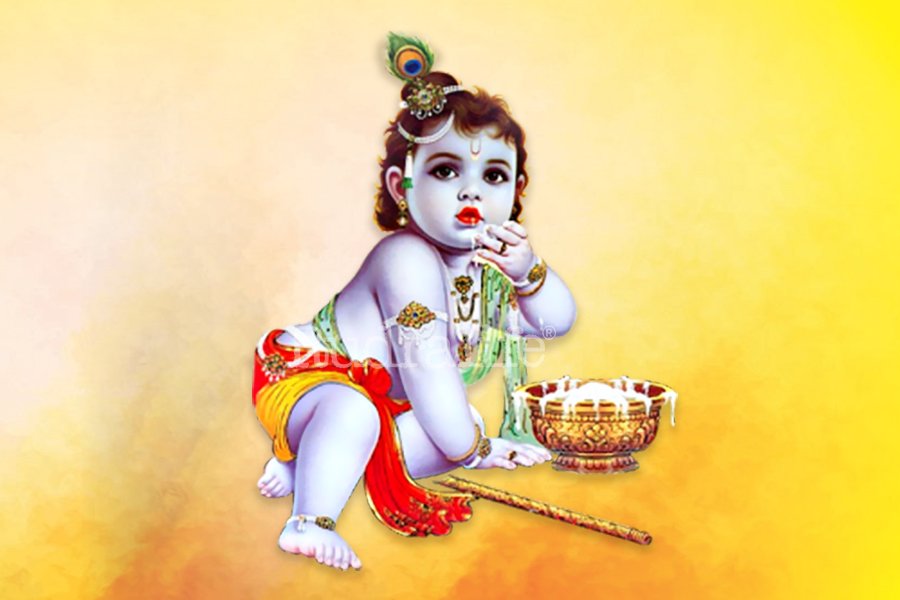By: Priyanka Saurabh
Karva Chauth is a festival celebrated annually by married Hindu women in which they fast from sunrise to moonrise to pray for the well-being and long life of their husbands. This festival is also celebrated by unmarried women who pray in the hope of getting the life partner they want. It falls on the fourth day of the dark fortnight (Krishna Paksha or the diminishing phase of the moon) in the month of Kartika of the Hindu lunar calendar. The date can be roughly anywhere between mid to late October. It is mainly celebrated in the states of northern India such as Punjab, Haryana, Himachal Pradesh, Uttar Pradesh, and Rajasthan. The word Karva Chauth is derived from two words ‘Karva’, which means an earthen pot with a spout, and ‘Chauth’ which means fourth. The earthen pot is of great importance as it is used by women to offer water to the moon as part of the rituals of the festival. It is said that this festival started when women started praying for the safe return of their husbands who had gone to fight wars in distant lands. It is also believed that it is celebrated to mark the end of the harvest season. Whatever the origin, the festival provides an opportunity to strengthen family ties.
The festival includes keeping a ‘Nirjala’ fast in which women neither eat nor take a drop of water throughout the day and worship Goddess Gauri, an incarnation of Parvati, who is blessed with a long and happy married life. There are many mythological stories associated with Karva Chauth. The most popular is related to Savitri and Satyavan in which Savitri brought her husband back from the clutches of death with her prayers and determination. When Lord Yama came to receive Satyavan’s soul, Savitri begged to grant him life. When she refused, she stopped eating and drinking and followed Yama who took her dead husband. Yama said that she could ask for any boon other than the life of her husband. Savitri asked him to have a child. Yama agreed. Being a “pati-vrata” (dedicated) wife, Savitri would never allow any other person to be the father of her children. Yama was left with no other option but to revive Savitri’s husband.
Another such story is that of Veervati, the only sister of seven beloved brothers. When the brothers did not see him fasting for the whole day, they misled him into believing that the moon had risen. Veeravati broke her fast and had food but soon she got the news of her husband’s death. She prayed for a whole year and the gods, pleased with her devotion, gave her husband’s life back. One such woman named Karva was deeply devoted to her husband. His intense love and dedication toward him gave him shakti (spiritual power). Her husband was caught by a crocodile while taking a bath in the river. Karva tied the crocodile with a cotton thread and asked Yama (the god of death) to send the crocodile to hell. Yama refused. Karva threatens to curse Yama and destroy him. Fearing to be cursed by the husband-Vrata (devotee) wife, Yama sent the crocodile to hell and blessed Karva’s husband with a long life. Karva and her husband enjoyed marital bliss for many years. Even today Karva Chauth is celebrated with great faith and belief.
The celebrations related to Karva Chauth in the country begin early in the morning when married women get up and get ready before the sun rises. The night before Karva Chauth, the woman’s mother sends a baya containing clothes, coconut, sweets, fruits, and vermilion (vermilion) for her daughter and gifts for the mother-in-law. Then the daughter-in-law should eat large (food eaten before sunrise on the day of Karva Chauth) given by her mother-in-law. This includes fresh fruits, dry fruits, sweets, chapatis, and vegetables. As noon approaches, the women arrive with their respective thalis (a large plate). This includes coconut, fruits, nuts, a lamp, a glass of raw lassi (a drink made of milk and water), sweet mathris, and gifts given to the mother-in-law. The plate is covered with a cloth. The women then come together and circumambulate the idol of Gaura Maa (Goddess Parvati) and the story of Karva Chauth is narrated by a wise elderly lady who ensures that the puja is done in the right way. After this, the women start rotating the plates in a circle. This is called plate making. This ritual is performed seven times. After the puja, women touch the feet of their mother-in-law and offer dry fruits to her as a token of respect.
The fast is broken when the moon shines in the dark sky. They carry a channi (sieve) and a puja thali containing a diya (made of wheat flour), sweets, and a glass of water. They go to a place where the moon is visible, usually the terrace. She looks at the moon through a sieve and offers raw lassi to the moon and prays for her husband. Now the husband feeds the same raw lassi and sweets to the wife and she touches her husband’s feet. Both take the blessings of their elders and thus the fast is broken. Dinner among Punjabis on the day of Karva Chauth consists of whole lentils such as red beans, green lentils, puri (fried Indian flatbread), rice, and sweets made from baya. The rituals associated with this festival have changed over time due to its depiction in present-day Bollywood films and television shows. It has also helped to popularize the festival in parts of India where it was not traditionally celebrated. Now in the changing times, especially among newlyweds, husbands have also started fasting for their wives. Thus, an old festival continues to be popular through its reinvention in both rural and urban social environments. (The author is a Research Scholar in Political Science, poet, freelance journalist, and columnist)







